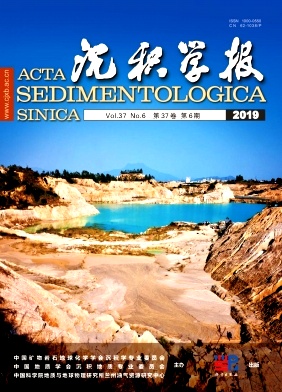Sedimentary Diagenetic Environment of the Lulehe Formation in the Pingtai Region,Northern Qaidam Basin
doi: 10.14027/j.issn.1000-0550.2019.008
- Received Date: 2018-09-12
- Rev Recd Date: 2019-01-09
- Publish Date: 2019-12-10
-
Key words:
- carbon and oxygen isotopes /
- main trace elements /
- carbonate cement /
- Pingtai region /
- Qaidam Basin /
- /
Abstract: Detailed analysis of the petrologic characteristics,carbonate cements and clay minerals of the reservoir rocks of the Paleogene Lulehe Formation in the central Pingtai region at the northern margin of the Qaidam Basin showed that the reservoir rocks in the platform area are mainly lithic sandstone and feldspar lithic sandstone,commonly with point contact and/or line contact between the clastic particles. As a result there are few primary interstices,only individual intragranular secondary pores. The clay mineral content is relatively high,up to 21.92% on average,mainly in mixed layers of illite/montmorillonite and illite. Montmorillonite and chlorite are predominant,and show obvious montmorillonite transformation into illite-montmorillonite. The pore fluid is alkaline water,which promotes the decarboxylation of organic matter and reflects hydrocarbon generation during compaction. The average paleotemperature at the time of carbonate cement formation was 75.20℃,mainly at the early diagenetic stage B. Elemental geochemical analyses showed carbon isotope values(δ13C) from -8.77‰ to -3.91‰(average -5.66‰);the carbon source was mainly decarboxylated organic carbon and inorganic carbon in carbonate rocks. Leaching also reduced the amount of the δ13C isotope in cements. The oxygen isotope(δ18O) ranged from -12.97‰ to -8.75‰(average 10.68‰). The paleosalinity(Z) was in the range 103.79 to 114.27(average 110.38). The carbonate precipitation temperature ranged from 62.89℃ to 90.53℃(average 75.20℃). Trace element determination gave average values for Sr,Cu,Th,U,Ba,Ni,Co,V and Cr of 195.25 μg/g,19.48 μg/g,7.32 μg/g,21.8 μg/g,735.52 μg/g,22.41 μg/g,9.40 μg/g,59.11 μg/g and 85.55 μg/g,in that order. The average values of the U/Th,V/Cr,Ni/Co and Cu/Zn ratios were 0.25,0.72,2.26 and 0.42,indicating that the Lulehe Formation(E1+2) is currently in a sedimentary oxidizing environment with high redox potential. Since the combined Sr/Ba and U averages 0.30 and 0.85 are both less than 1,together with the C and O isotope content in the carbonate cement,the ancient salinity was estimated to be 110.38 wt%; this indicates a freshwater sedimentation paleoenvironment with a brackish water phase.
| Citation: | YANG YongHeng, SUN GuoQiang, WANG YeTong, ZHU WenJun, QIN CaiHong, GUAN Bin. Sedimentary Diagenetic Environment of the Lulehe Formation in the Pingtai Region,Northern Qaidam Basin[J]. Acta Sedimentologica Sinica, 2019, 37(6): 1258-1268. doi: 10.14027/j.issn.1000-0550.2019.008 |






 DownLoad:
DownLoad: